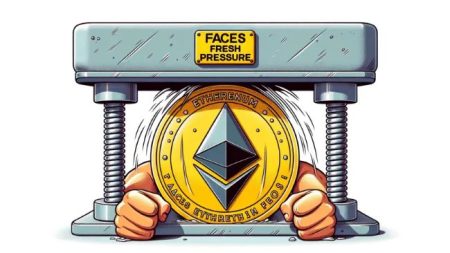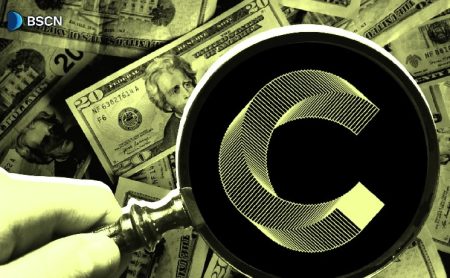Bitcoin Rebounds from Asian Lows as Demand Metrics Show Bullish Signals
By Financial Times Reporter | November 12, 2025
Market Momentum Returns as Bitcoin Finds Support and Institutional Interest Grows
Bitcoin (BTC) bounced off early Asian session lows on Tuesday, providing much-needed support across the cryptocurrency market and reigniting bullish sentiment among investors. The flagship cryptocurrency, trading around $104,545, helped lift other major digital assets including Ethereum (ETH), XRP, and Solana (SOL) from their recent slumps. While this price action might appear typical in the volatile crypto markets, deeper metrics reveal a more significant shift occurring beneath the surface—one that points to strengthening fundamentals and renewed institutional interest in digital assets.
The most telling indicator comes from the “apparent demand” metric, which tracks Bitcoin’s issuance against the behavior of long-term holders to gauge cumulative demand over time. According to data from Capriole Investments, this metric has not only turned positive but surged to a three-month high of 5,252 BTC—equivalent to approximately $549 million. This uptick in fundamental demand corresponds with significant capital inflows into U.S.-listed Bitcoin spot ETFs, which recorded $523 million in net inflows on Tuesday alone, the highest single-day figure in over a month according to SoSoValue data. “What we’re witnessing isn’t just normal market volatility, but rather concrete evidence of institutional capital reaffirming its commitment to Bitcoin as a legitimate asset class,” noted Marcus Thielen, a cryptocurrency market analyst at a leading financial research firm. “The correlation between spot ETF inflows and the apparent demand metric suggests this rally has stronger foundations than previous upswings.”
Despite these encouraging signals, derivatives markets continue to show caution among professional traders. On Deribit, widely considered the preferred venue for sophisticated cryptocurrency traders, annualized funding rates remain significantly below the 2025 average of 5.9%. Ethereum displays a similar pattern of subdued derivatives enthusiasm, complemented by muted stablecoin lending rates on decentralized finance platform Aave. According to analysis from FRNT Financial, these indicators point to a continued conservative approach among institutional traders who may be hesitant to deploy leverage in the current macroeconomic climate. “The disconnect between spot demand and derivatives positioning creates an interesting dynamic,” explains Jennifer Harrison, cryptocurrency strategist at Global Investments. “Strong spot buying provides a floor for prices, while the lack of excessive leverage reduces the risk of cascading liquidations that have historically created dramatic downside volatility.”
Macroeconomic Headwinds and Political Uncertainty Temper Enthusiasm
Much of the cautious sentiment can be attributed to ongoing concerns about the U.S. government’s fiscal situation. Market participants appear increasingly weary of the protracted political drama surrounding the government shutdown. While the Senate has passed a stopgap bill extending funding through January 30—temporarily removing immediate systemic risks—the measure still requires House approval and ultimately fails to address the underlying fiscal gridlock facing the nation. Singapore-based QCP Capital aptly described the situation as “a classic ‘kick-the-can’ fix” that provides little long-term certainty for investors trying to position themselves in volatile markets.
The absence of regular economic data releases during the partial government shutdown has left traders navigating with limited visibility. Private data publications, including ADP payrolls and the NFIB Index, have taken on outsized importance in this information vacuum. Both reports currently point toward softening labor conditions and increasingly cautious business sentiment across the American economy. These signals reinforce what QCP describes as the Federal Reserve’s “easing with caution” approach heading into the December Federal Open Market Committee meeting scheduled for December 9-10. Meanwhile, traditional safe-haven assets like gold have seen their recent rallies stall around $4,130 per ounce, coinciding with a renewed spike in the MOVE index, which measures expected volatility in Treasury markets. This increased uncertainty in government bond markets typically creates headwinds for risk assets, including cryptocurrencies, and could explain some of the hesitation among derivatives traders.
Stablecoin Dominance and Sector Rotation Signal Market Evolution
Beneath headline price movements, interesting trends are emerging in market structure and investor behavior. Liquidity continues to flow between different cryptocurrency sectors, with today’s capital shifting from privacy-focused coins toward smaller projects. Tokens including ASTER, RENDER, SKY, and MNT have jumped approximately 7% as traders rotate their focus. Additionally, technical analysis reveals that Tether’s USDT dominance rate—the stablecoin’s share of total crypto market capitalization—is rising again after successfully holding a long-term bullish trendline. Upswings in stablecoin dominance typically occur when investors either pivot toward decentralized finance opportunities or shift into a risk-averse mode, seeking safety in dollar-equivalent assets while maintaining exposure to the cryptocurrency ecosystem.
The institutional landscape continues to evolve rapidly as traditional financial powerhouses expand their digital asset capabilities. JPMorgan recently rolled out its deposit token, JPMD, allowing institutional clients to move bank-held dollars via the Base blockchain in seconds. This development follows successful pilots with major financial entities including Mastercard, Coinbase, and B2C2. Meanwhile, payments giant Visa has begun testing stablecoin payouts aimed at helping creators and freelancers access funds faster across borders. The pilot enables payouts in dollar-backed stablecoins such as Circle’s USDC, potentially opening new use cases for digital currencies in the global payments infrastructure. Despite these promising developments, regulatory challenges persist in key markets. Kraken Co-CEO Arjun Sethi recently criticized the United Kingdom’s cryptocurrency regulations, arguing that Financial Conduct Authority warning labels and additional compliance steps create unnecessary hurdles for investors and limit the availability of products to UK customers compared to their American counterparts.
Looking Ahead: Key Events and Data Points for Cryptocurrency Investors
As markets continue to digest these complex cross-currents, several upcoming events may provide further direction for cryptocurrency prices. Federal Reserve Governor Christopher J. Waller is scheduled to speak at the Ninth Annual Fintech Conference hosted by the Federal Reserve Bank of Philadelphia, while Federal Reserve Governor Stephen I. Miran will participate in a Fireside Chat at the University of Cambridge Judge Business School. Both appearances could offer insights into the central bank’s thinking about digital assets and monetary policy. On the corporate front, Coincheck Group, Circle Internet Group, and DeFi Development are all scheduled to report earnings, potentially moving related stocks and the broader crypto equity sector.
The conference calendar remains active with the Mining Disrupt Conference continuing in Dallas, the Cardano Summit 2025 beginning in Berlin, and Blockchain Summit Latam 2025 kicking off in Medellin, Colombia. These industry gatherings often generate partnership announcements and technological updates that impact market sentiment. Technical indicators suggest that Bitcoin’s historically low volatility may be ending, with Volmex’s 30-day implied volatility index (BVIV) recently surging past a trendline that had characterized the year-to-date decline from an annualized 73%. This breakout in the volatility gauge, derived from options pricing, typically precedes significant price movements in either direction. With Bitcoin priced at approximately 24.9 ounces of gold and representing about 7.03% of gold’s total market capitalization, the cryptocurrency continues to make inroads as a digital alternative to traditional precious metal investments. As institutional adoption grows and market structures mature, the coming months could prove pivotal in determining whether digital assets can maintain their momentum against an increasingly complex macroeconomic backdrop.















